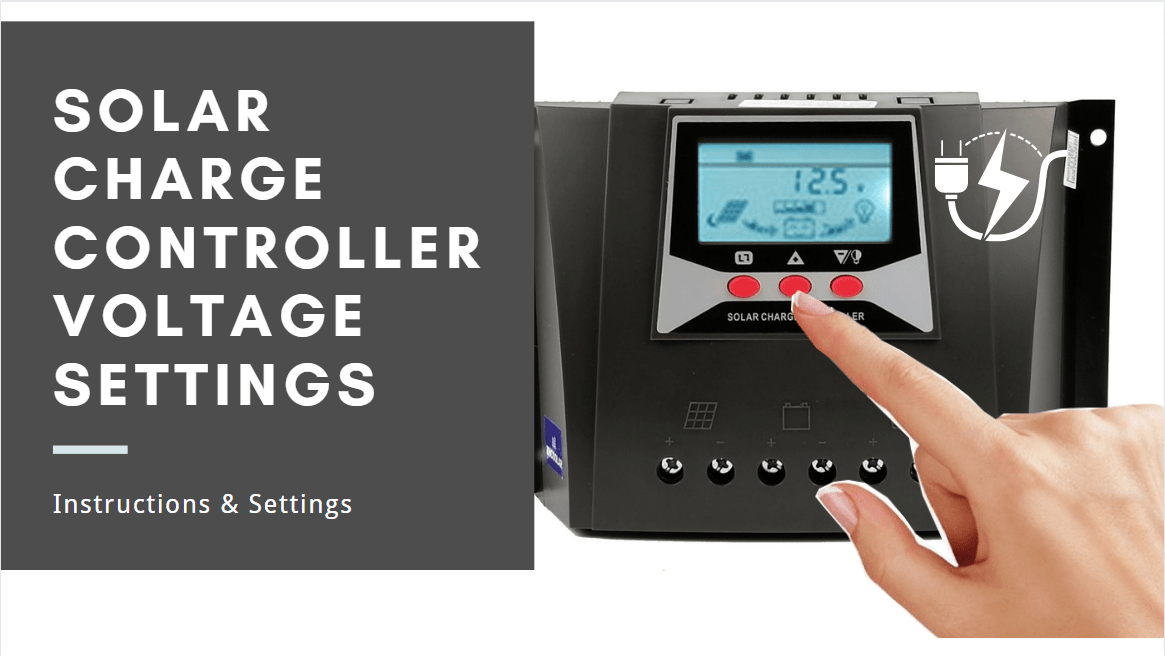The solar controller works like a brain in an off-grid solar system, regulating the process of transferring electricity generated by solar energy to the batteries, and here we will talk about how to set the system voltage to make better use of the solar controller.
Charge voltage setting is one of the important solar controller settings in properly make the controller running.
When purchasing a solar charge controller, the upper and lower voltage values should be matched. The higher voltage will allow the charge controller to handle the maximum voltage of your solar power system. This is particularly important if you’ve connected solar panels in a series, as the total voltage will be higher than the maximum voltage. The following guide will help you determine the correct voltage settings for your solar panels.
The rated input voltage of a solar charge controller is known as the absorption voltage. It is important to set the voltage at this point to avoid overcharging and excessive gassing of your battery bank. Sometimes, a battery bank will be fully charged by the absorption stage, and any further power from the solar charge controller will only increase the battery’s heating and gassing. If you don’t set your solar charge controller at the proper voltage, your batteries may not be able to convert solar energy into chemical energy, and you may find yourself losing power.
Solar charging is a combination of a multi-stage charging process, and both mppt controllers and pwm controllers have such a mechanism.
The charging stages are not constant and usually require a combination of boost charging, float charging, equalization charging and other charging methods together to complete the charging of the battery.
A complete charging process includes: fast charging, maintenance charging, and float charging.
Solar Charge Controller Voltage Settings is no longer a problem if you carefully looking the article and follow the guide step by step.
When it comes to solar charge controller voltage settings there are several voltages involved:
- Charging Voltages
- Absorption Voltage
- Float Voltage
- Equalization Voltage
Charging Voltages Charge: The Bulk charge Stage consists of approximately 80% of the charge volume, where the charger current remains constant (in a constant current charger) and the voltage increases. A properly sized solar charger will give the battery as much current as it will accept, up to the capacity of the charger (25% of the battery capacity in amp hours), and will not cause the wet battery temperature to exceed 125°, or the AGM or GEL (valve regulated) battery temperature to exceed 100°.
Absorption Voltage Charge: During the absorption voltage Charge (the remaining 20%, approximately), the solar controller holds the voltage at the charger’s absorption voltage (between 14.1 VDC and 14.8 VDC, depending on the charger set point) and reduces the current until the battery is full. Some charger manufacturers refer to this absorption phase as the equalization phase. We disagree with the use of this term. If the battery does not hold a charge, or if the current does not drop after the expected charge time, the battery may have some permanent sulfation.
Float Voltage Charge: The FLOAT Voltage Charge is when the charge voltage is reduced to between 13.0 VDC and 13.8 VDC and remains constant while the current is reduced to less than 1% of the battery capacity. This mode can be used to maintain a fully charged battery indefinitely.
Equalization Voltage Charge: Equalization charging occurs when a battery is purposefully overcharged after a full charge cycle. Essentially, you are charging the battery at a higher voltage than normal to help eliminate sulfate buildup and equalize the voltage of each cell.
Solar Charge Controller Voltage Settings Chart
The setting of charging voltage is very relevant to your battery type, different types of batteries have different characteristics and need to be set separately for each stage of charging voltage. The good thing is that it is not complicated, just follow the parameters in the table below to set it.
The appropriate charging voltage for the battery is indicated on the battery label, so please check the battery label and the included instruction manual carefully before setting.
Solar Charge Controller Voltage Setting Table
| Battery Type | Sealed Battery | Gel Battery | Open Lead Acid Battery | Lithium Battery | Custom Battery |
| Over voltage Disconnect Voltage | 16.0V | 16.0V | 16.0V | —— | 9~17V |
| Equalization Voltage | 14.6V | —— | 14.8V | —— | 9~17V |
| Boost Voltage | 14.4V | 14.6V | 14.2V | 14.4V | 9~17V |
| Float Charge Voltage | 13.8V | 13.8V | 13.8V | —— | 9~17V |
| Boost recovery voltage | 13.2V | 13.2V | 13.2V | —— | 9~17V |
| Equalization Duration | 120 Min | —— | 120 Min | —— | 0~600 Min |
| Equilibrium charging interval | 30 Day | 0 Day | 30 Day | —— | 0~250 Day |
| Equilibrium charging interval | 120 Min | 120 Min | 120 Min | —— | 10~600 Min |
And there you go, these are the best solar charge controller voltage settings guide in 2022 which can provide you amazing performance. Please take the settings mentioned as a template and turn some settings up to find a the best charge performance.
Solar Charge Controller Voltage Settings Summary
You get to take away the best solar charge controller voltage settings in this guide. Settings that will make your solar controller amazing, and give you decent charging quality.
I hope these tweaks, settings, and fixes were able to help you. And in case of any questions or queries, you can always reach out in the comment section below.
